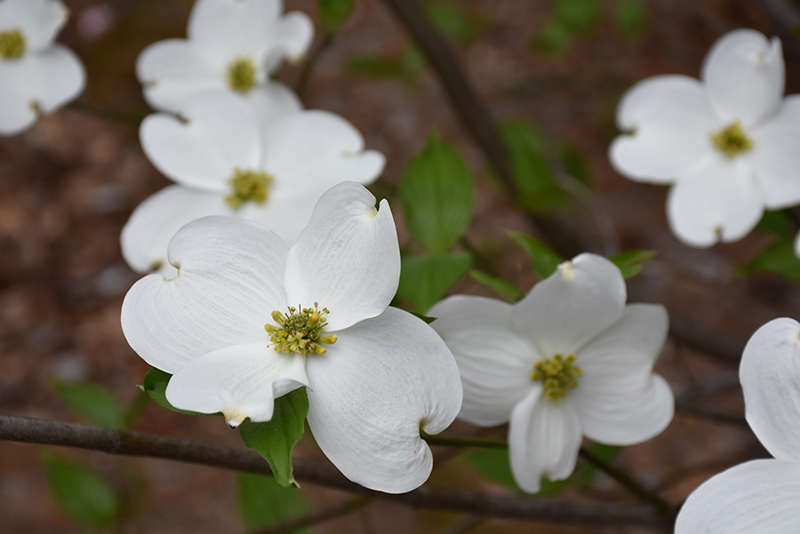>> Home
Jean's Appalachian Snow Flowering Dogwood
Cornus florida 'Jean's Appalachian Snow'
Height: 20 feet
Spread: 20 feet
Sunlight:
![]()
![]()
Hardiness Zone: 5a
Description:
This prolific spring bloomer has pretty rounded white bracts that are large and stiff; an upright tree with layered branches and full, rounded form; great red fall color; excellent powdery mildew resistance
Ornamental Features
Jean's Appalachian Snow Flowering Dogwood features showy bracted creamy white flowers with white bracts held atop the branches in mid spring. It has dark green deciduous foliage. The pointy leaves turn an outstanding dark red in the fall. It produces red berries from early to late fall. The warty gray bark adds an interesting dimension to the landscape.
Landscape Attributes
Jean's Appalachian Snow Flowering Dogwood is a multi-stemmed deciduous tree with a stunning habit of growth which features almost oriental horizontally-tiered branches. Its average texture blends into the landscape, but can be balanced by one or two finer or coarser trees or shrubs for an effective composition.
This is a relatively low maintenance tree, and should only be pruned after flowering to avoid removing any of the current season's flowers. It is a good choice for attracting birds to your yard. Gardeners should be aware of the following characteristic(s) that may warrant special consideration;
- Insects
- Disease
Jean's Appalachian Snow Flowering Dogwood is recommended for the following landscape applications;
- Accent
- Shade
Planting & Growing
Jean's Appalachian Snow Flowering Dogwood will grow to be about 20 feet tall at maturity, with a spread of 20 feet. It has a low canopy with a typical clearance of 4 feet from the ground, and is suitable for planting under power lines. It grows at a slow rate, and under ideal conditions can be expected to live for approximately 30 years.
This tree does best in full sun to partial shade. You may want to keep it away from hot, dry locations that receive direct afternoon sun or which get reflected sunlight, such as against the south side of a white wall. It requires an evenly moist well-drained soil for optimal growth, but will die in standing water. It is very fussy about its soil conditions and must have rich, acidic soils to ensure success, and is subject to chlorosis (yellowing) of the foliage in alkaline soils. It is quite intolerant of urban pollution, therefore inner city or urban streetside plantings are best avoided, and will benefit from being planted in a relatively sheltered location. Consider applying a thick mulch around the root zone in winter to protect it in exposed locations or colder microclimates. This is a selection of a native North American species.
